
Symbolism plays a large part in ceremonies in Thailand, and the cremation of His Late Majesty, King Bhumibol Adulayadej, is no exception. As a matter of fact, as the king is “owner of the land” (phra chao paen din) and everything therein, the symbolic aspect is even more evident.
Like the majority of Thais the late king was a Buddhist, however, the court tradition draws from Brahmin beliefs. To these ancient beliefs add the newer, western dimension of King as Commander-In-Chief. Therefore, the king could be portrayed as a Bodhisatva in the Buddhist perspective, an incarnation of Vishnu in the Brahmin perspective, and Head of State and Cammander-In-Chief in the Western perspective. All of these factors were present in the late king’s cremation ceremonies.
The working cog behind the first two perspectives is the belief in the Three Worlds Cosmology (Trai Bhumi), which places all unawakened sentient beings into three categories: Kāmaloka, or the world of desire. This world includes humans, the lower celestial beings (devas), various levels of hell-beings, hungry ghosts and animals. These beings by and large are motivated by Greed, Anger and Delusion; Rūpaloka, the various levels of Brahma-gods, and Arūpaloka, or the four formlessness realms.
(photos: Christiane Landeck)
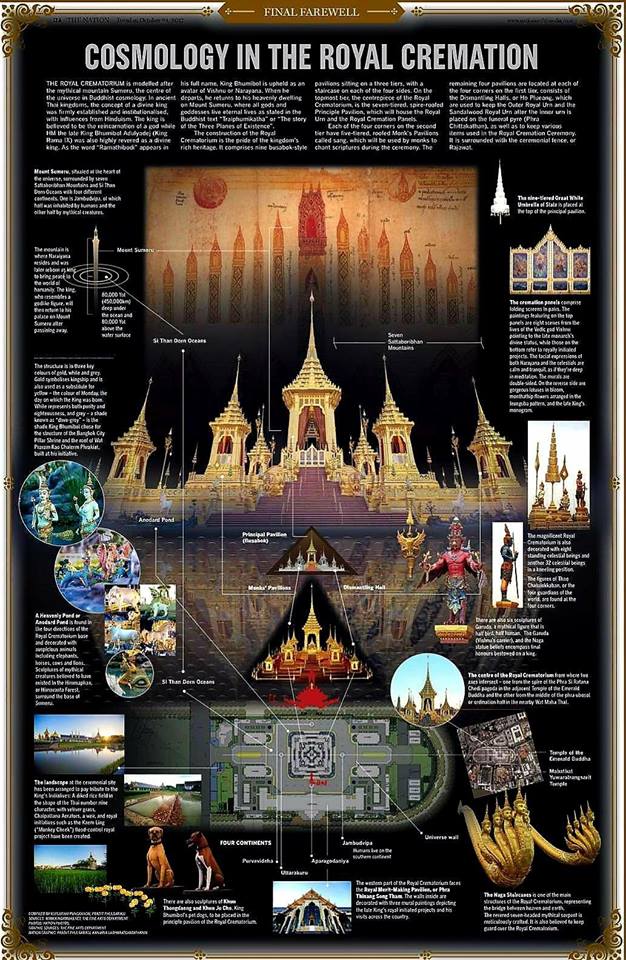
This style of crematorium, known as a busabok, is reserved for the king, while the prasat style (celestial mansion) is used for royals of a lesser rank. The protocol that dictates the decoration and materials used of each level of royal cremation is vast, too detailed to undertake for this blog.
King Rama IX’s crematorium plan consists of the main building (busabok), where the actual cremation took place, and eight smaller, similar-looking buildings, located at the corners of the first and middle levels, respectively. Using the Trai Bhumi theme, the main building represents the cosmic mountain, Sumeru, while the four smaller buildings on the middle level represent the four continents, uttarakuru dipa (north), burapavideha dipa (east), jambs dipa (south) and amaragoyana dipa (west) . The four remaining buildings are used for various mundane purposes.

The crematorium has been populated with various mythological animals and gods, placed in their corresponding positions according to the Trai Bhumi source. Just in front of the crematorium itself is a pool of water representing Anotata lake. In this lake we can find the twelve kinds of elephants, serpents (nagas), horses and oxen. On the first level, facing toward the Sumeru, the cosmic mountain (crematorium) are the Four Heavenly Kings (catu maharaja): Kuvara, of Vesuvan (north), Dhataratha (east), Virulhaka (south) and Viruppakha (west). Kuvera is lord over the giants (yaksas), Dhataratha is lord over celestial musicians, Virulhaka is lord over the celestials (devas) and Viruppakha is lord over the serpents. There are many half-bird half-man figures (garudas) in various positions. According to Brahmin or Hindu lore, Garuda is the vehicle of Vishnu, and in this case, Garuda is taking Vishnu (the late king) back to heaven. [Interestingly, the Garuda appears on the royal standard flag attached to the king’s car, as if Garuda is transporting the king, himself]. There are also kneeling and standing celestials holding umbrellas and sunshades, as well as naga balustrades. The late king’s dogs, Khun Tong Dang and Jo Cho, also appear in effigy, further personalizing this one of a kind crematorium.
The screens on the four sides of the busabok portray Vishnu, taken from King Vajiravudh’s interpretation of the story. The panels below are decorated with paintings of His Majesty’s royal projects, each side equating to the four elements. For example, the project to prevent flooding known as Monkey Cheeks (kaem ling), represents the water element.
I have briefly explained the significance of Buddhist and Brahmin symbolism above, leaving the western dimension of King as Commander-In-Chief. The level of dress uniform used by the members of the military, from the beginning of the procession out of the Dusit Throne Hall, up to the actual cremation, reflected the status of the deceased. The gun salutes as well as the gun carriage used to convey the urn from the royal chariot to the crematorium, symbolizes the king’s role as Commander-In-Chief.




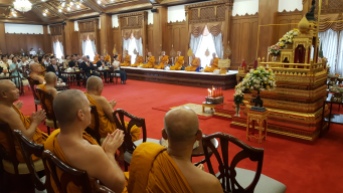







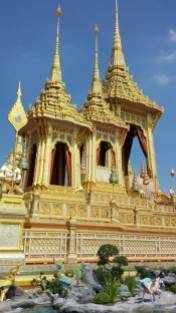






















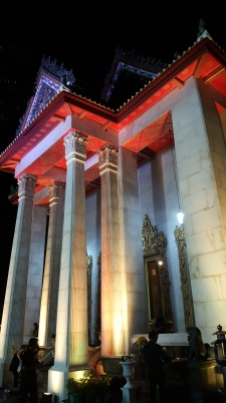


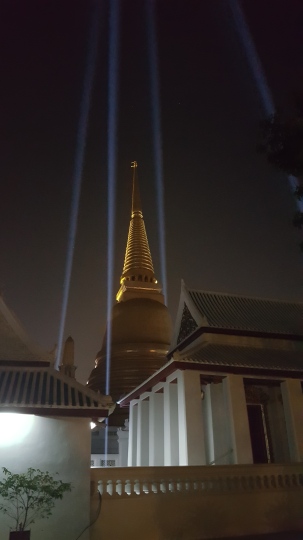






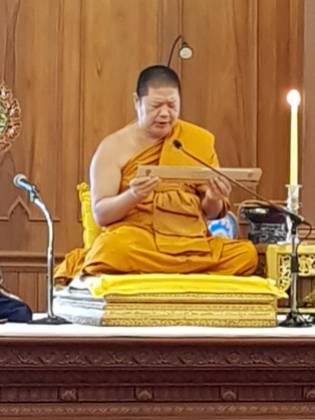


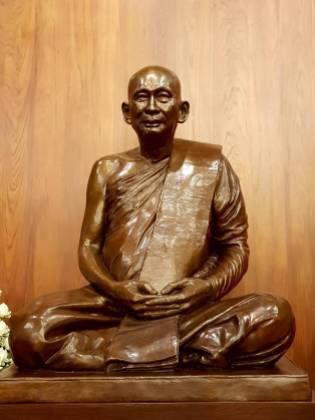
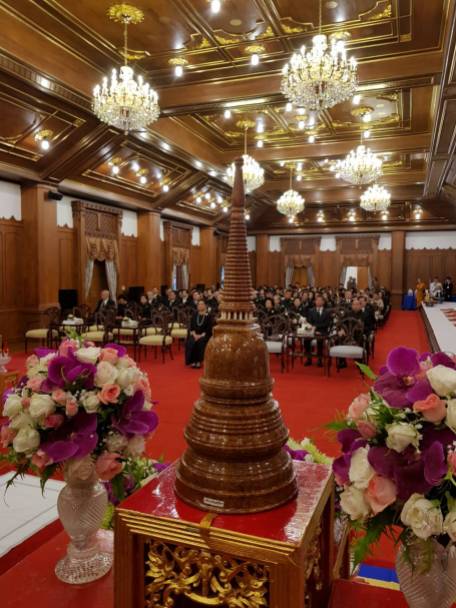










You must be logged in to post a comment.